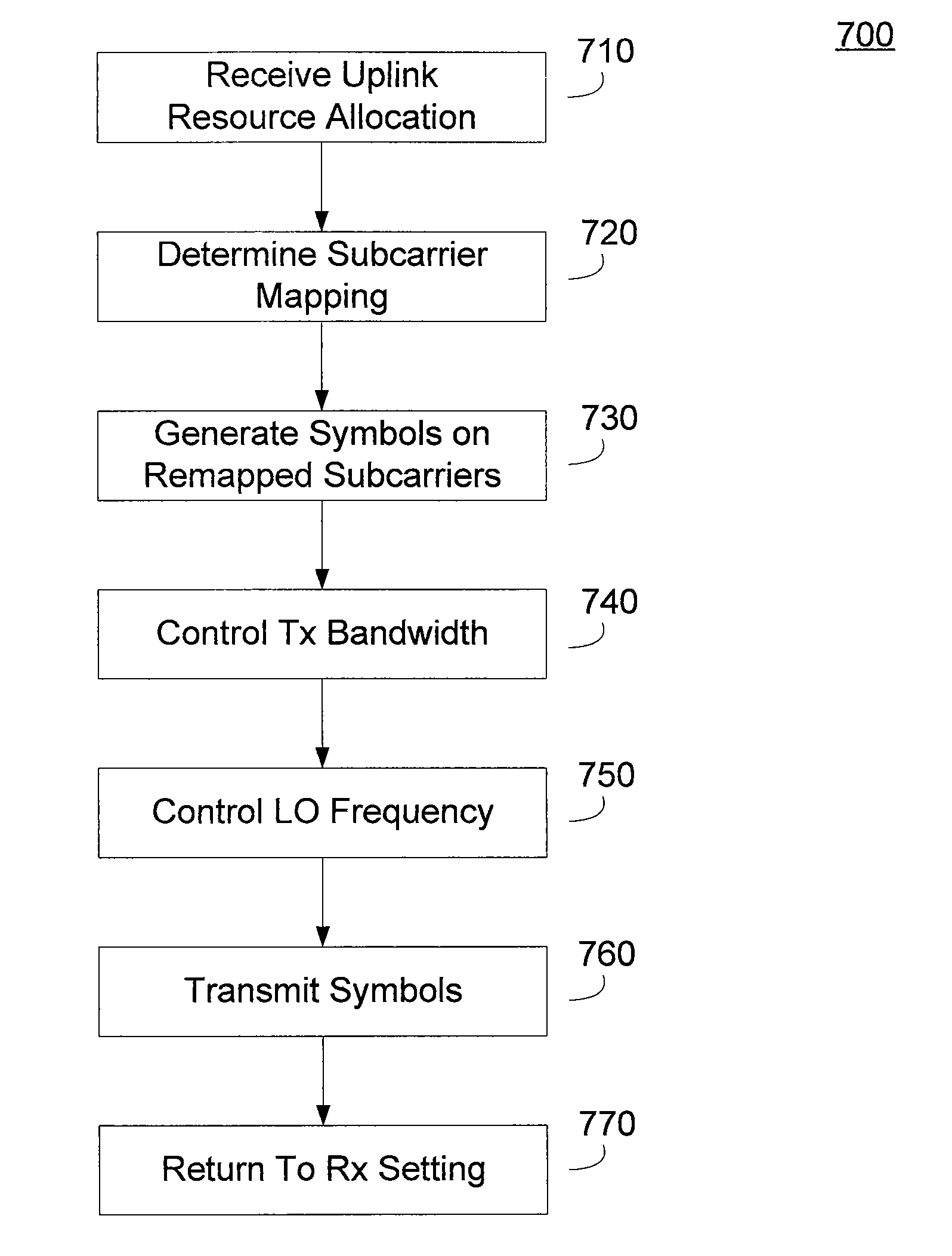Wireless transceiver with reduced transmit emissions
a transmit emission and wireless technology, applied in the direction of digital transmission, electrical equipment, transmission path sub-channel allocation, etc., can solve the problems of reducing transmitter performance, reducing transmitting capacity, and inability to meet the constraint of out of band emissions, so as to reduce transmitting bandwidth, reduce transmitting out of band emissions in an adjacent band, and reduce transmitting the effect of transmission
- Summary
- Abstract
- Description
- Claims
- Application Information
AI Technical Summary
Benefits of technology
Problems solved by technology
Method used
Image
Examples
Embodiment Construction
[0029]Methods and apparatus for reducing transmit emissions are described herein. The transmit out of band emissions in an adjacent band can be reduced while complying with existing wireless communication standards through the utilization of one or more of: reduced transmit bandwidth, transmit operating band offset, and channel index remapping.
[0030]The transmit emissions in an adjacent channel can be reduced by reducing the bandwidth of the useable transmit operating band. In a wireless communication system having a number of Frequency Division Multiplex (FDM) channels distributed across a transmit operating band, a transmitter can reduce out of band emission by selectively limiting the FDM channels that can be populated. Similarly, in a wireless communication system having a wideband signal occupying a transmit operating band, a transmitter can selectively configure the transmit signal to occupy a portion of the transmit band. Decreasing the amount of the transmit spectrum that is...
PUM
 Login to View More
Login to View More Abstract
Description
Claims
Application Information
 Login to View More
Login to View More - R&D
- Intellectual Property
- Life Sciences
- Materials
- Tech Scout
- Unparalleled Data Quality
- Higher Quality Content
- 60% Fewer Hallucinations
Browse by: Latest US Patents, China's latest patents, Technical Efficacy Thesaurus, Application Domain, Technology Topic, Popular Technical Reports.
© 2025 PatSnap. All rights reserved.Legal|Privacy policy|Modern Slavery Act Transparency Statement|Sitemap|About US| Contact US: help@patsnap.com



